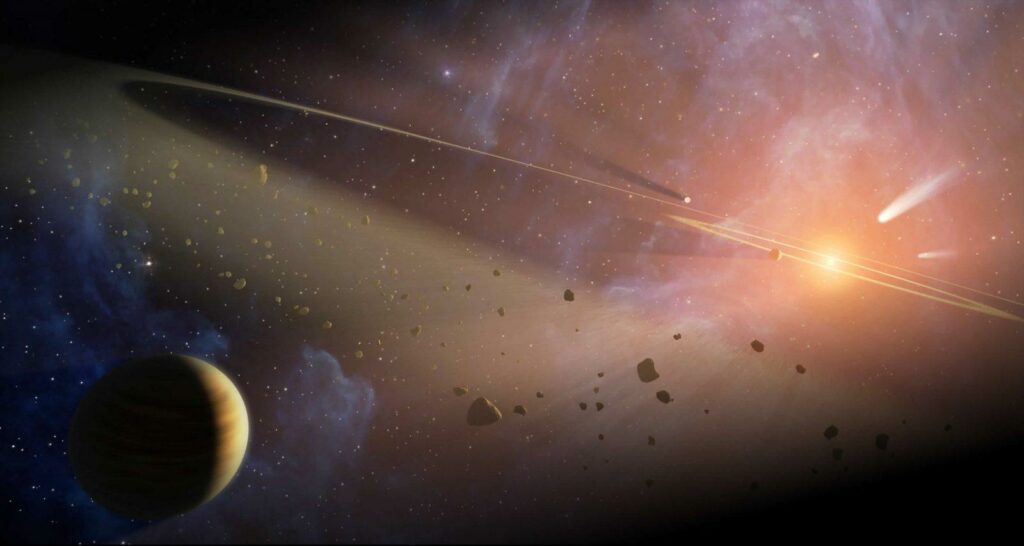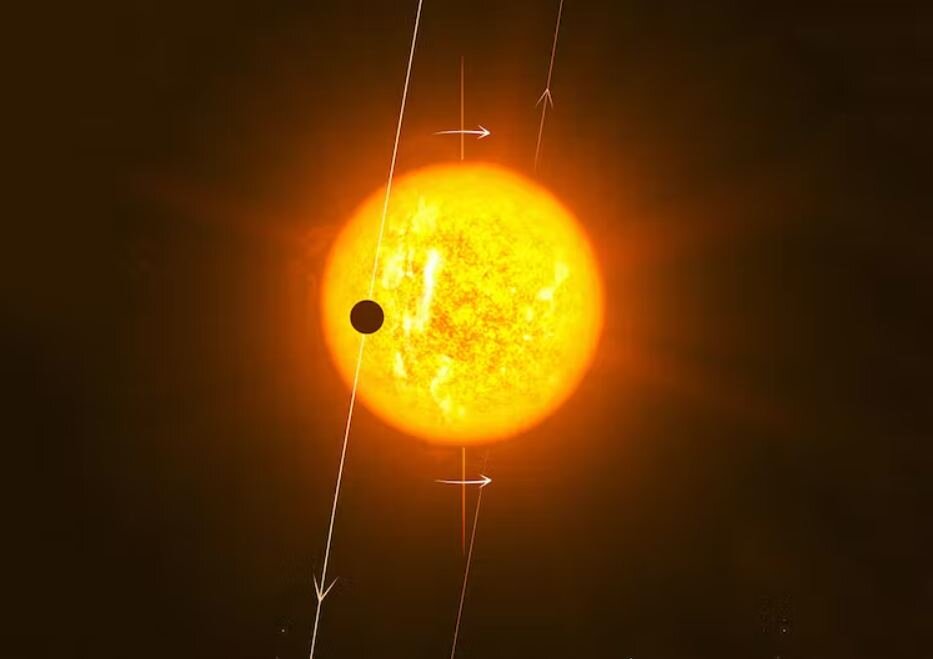Astronomers have discovered that the orbit of the exoplanet TOI-640 b passes over the poles of its star. This is stated in an article to be published in the journal Astronomy and Astrophysics.
The orbits of all the planets of our Solar System lie approximately in the same plane. In addition, they move in the same direction, coinciding with the direction of rotation of the Sun around its axis. Astronomers attribute this to the fact that our star and its moons formed from a single rotating protoplanetary disk.

For a long time it was believed that in terms of the location of orbits, other star systems should generally resemble ours. But in recent years, astronomers have accumulated enough data to say that such a picture is not always observed. One of the most obvious examples of this is the exoplanet, which received the designation TOI-640 b.
TOI-640 b was opened in 2021. It is part of a binary system 1115 light-years from Earth, consisting of a star of spectral class F and a red dwarf. The exoplanet is a hot gas giant. Its mass is 0.57 and its radius is 1.72 Jupiter radii. The exoplanet orbits the main component of the system, making one orbit in five days. Due to its proximity to the star, its atmosphere is heated to a temperature exceeding 1,500 °C.

During the observations, astronomers were able to determine the inclination of the orbit of TOI-640 b. To do this, the Rossiter-McLaughlin effect was used, based on the phenomena of red and blue displacement. It turns out that the difference between the plane of the orbit of the exoplanet and the plane of the equator of the star is 104°. Thus, the exoplanet flies over the poles of its luminary.
Currently, researchers have several different assumptions explaining such anomalies by the influence of tidal forces from other bodies of the system, orbital resonances and other factors. But in any case, astronomers believe that there are too many bodies like TOI-640 b (especially among hot Jupiters) to continue treating them as rare exceptions that go beyond the standard model.
According to https://phys.org
Follow us on Twitter to get the most interesting space news in time
https://twitter.com/ust_magazine

